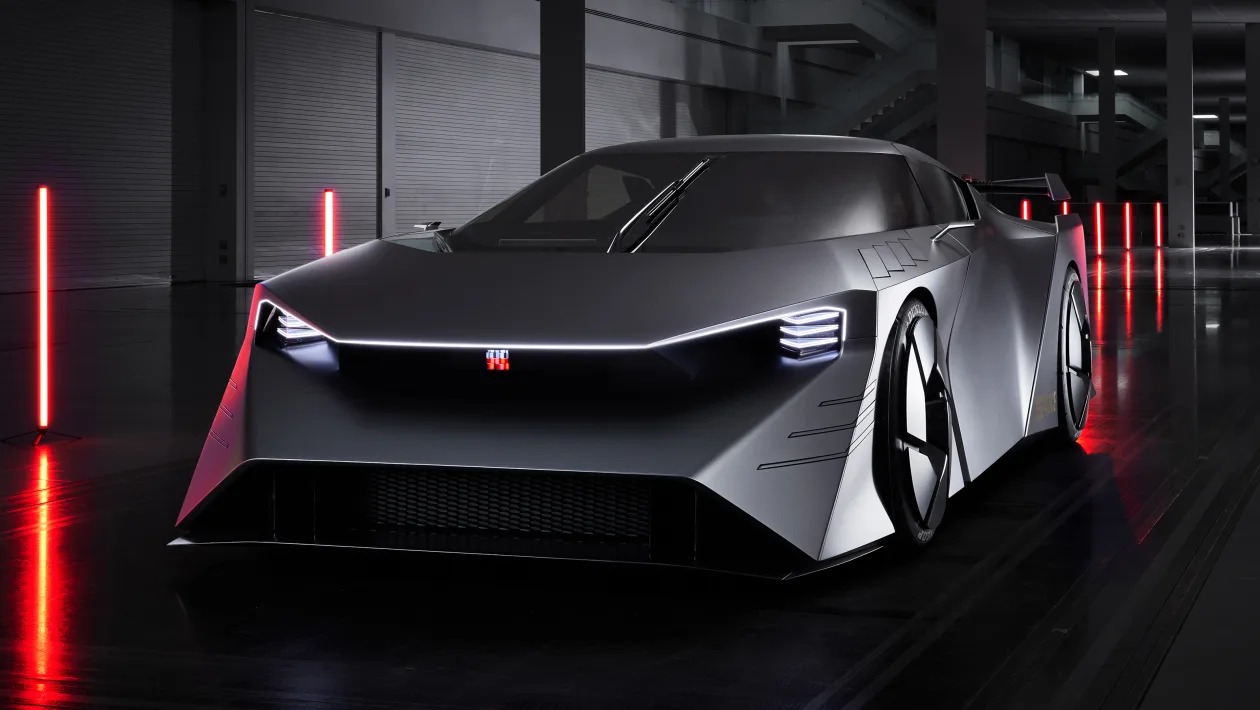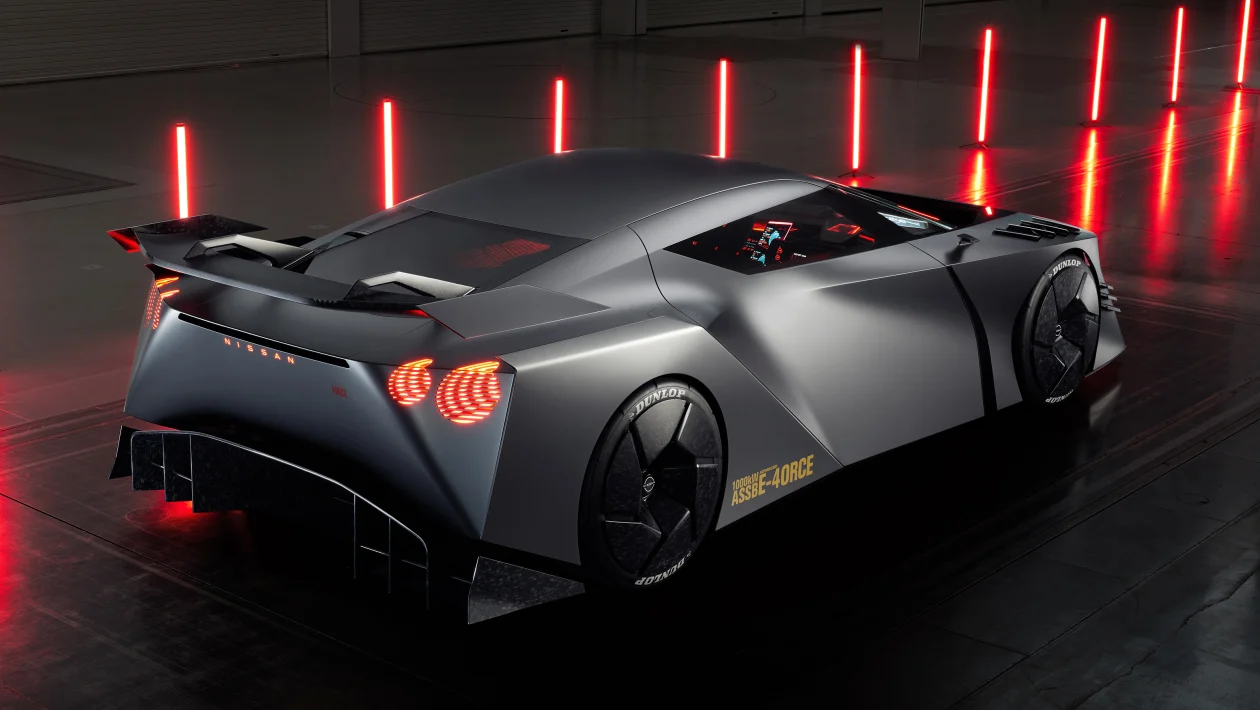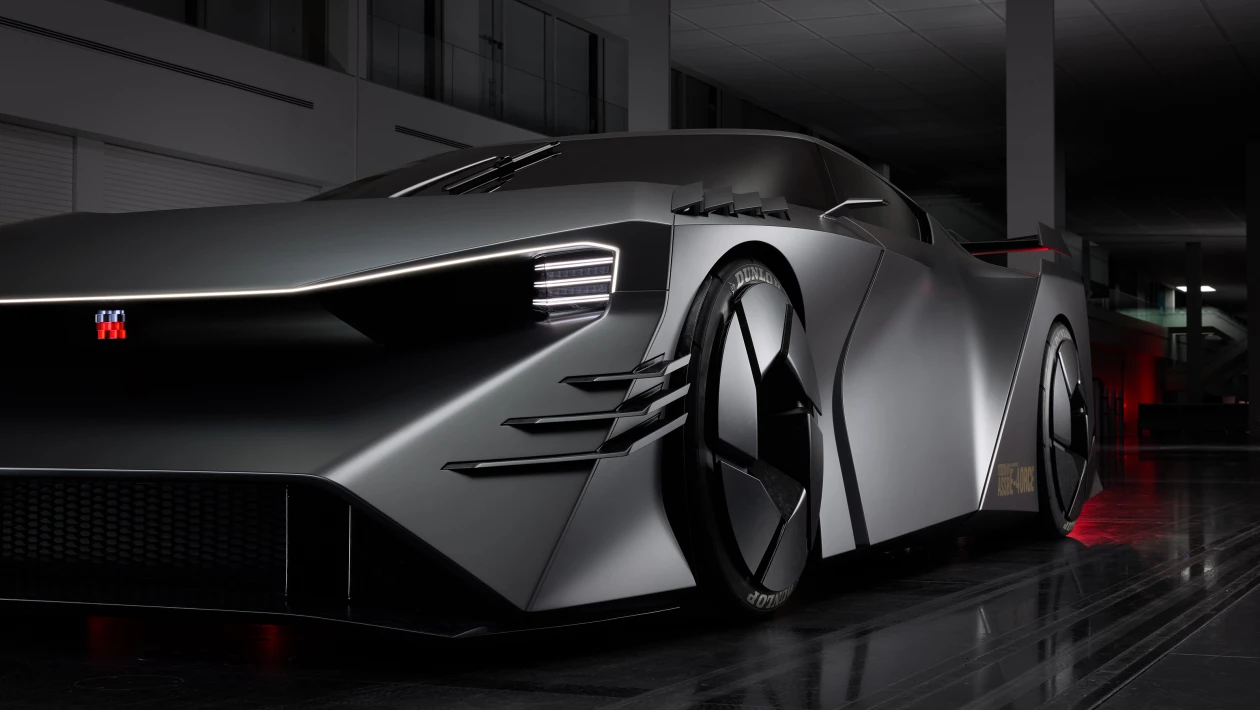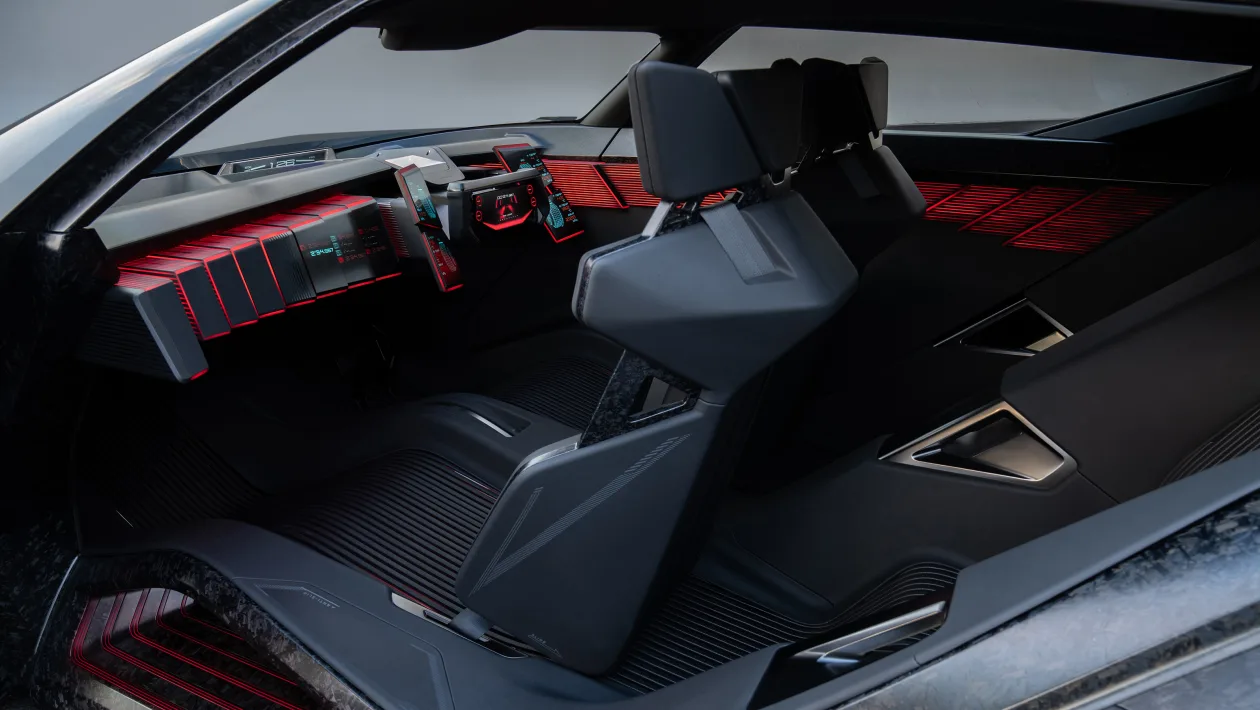Nissan has previewed the next-generation GT-R at the Tokyo motor show with a radical EV supercar.
The R35 Nissan GT-R established itself as a cult-hero over its 13-year lifespan until it was axed in Europe last year. Despite common misconceptions that it’s an overly-digitised machine, it represented a genuinely raw driving experience, but the next-generation GT-R will forge an entirely new path as an EV.
Meet the Nissan Hyper Force concept. Built to represent the future of Nissan supercars, this monstrous all-electric creation provides a glimpse of where the GT-R will go next.
The visual references to Nissan’s performance icon are obvious, from the red and white GT-R-style badging at the front to the car’s tall shoulder line and quartet of round tail lights. There are extreme angles and boxy extrusions from nose to tail, which will almost certainly be watered down for the production R36 GT-R.
Given that the GT-R – and the R35 in particular – is notorious for dramatically shifting the goal posts for road car capability, the R36 is expected to do the same. Exact powertrain specs for the Hyper Force haven’t been announced, but we do know that it generates 1000kW from a four-wheel drive electric motor setup, drawing power from a solid-state battery.
Nissan has already committed to launching its first solid-state EV in 2028, which could allow the next GT-R to adopt lighter, more compact cells while achieving an acceptable range. The Hyper Force’s bodywork has been formed from carbonfibre to further reduce weight.
Movable aero elements have also been incorporated into its design, with an active diffuser and what Nissan calls a ‘plasma actuator’ to keep airflow attached to the body at speed to generate more downforce.
The Hyper Force’s suspension is configurable on the fly, with anti-roll bar adjustments accessed through the infotainment screen inside. The cabin itself is unlikely to represent a future production car, with augmented reality functions and movable motorised displays flanking a small rectangular steering wheel. As with the R35, Nissan has partnered with Polyphony Digital – creators of the Gran Turismo game series – to devise the Hyper Force’s screen graphics, which relay torque distribution, brake temperature and tyre grip information to the driver.
The R36 GT-R is unlikely to reach production any time soon, especially given that the Hyper Force showcases powertrain technology that isn’t yet available on a wide scale. Expect it to release near the end of the decade if Nissan’s solid-state battery development proceeds as planned







